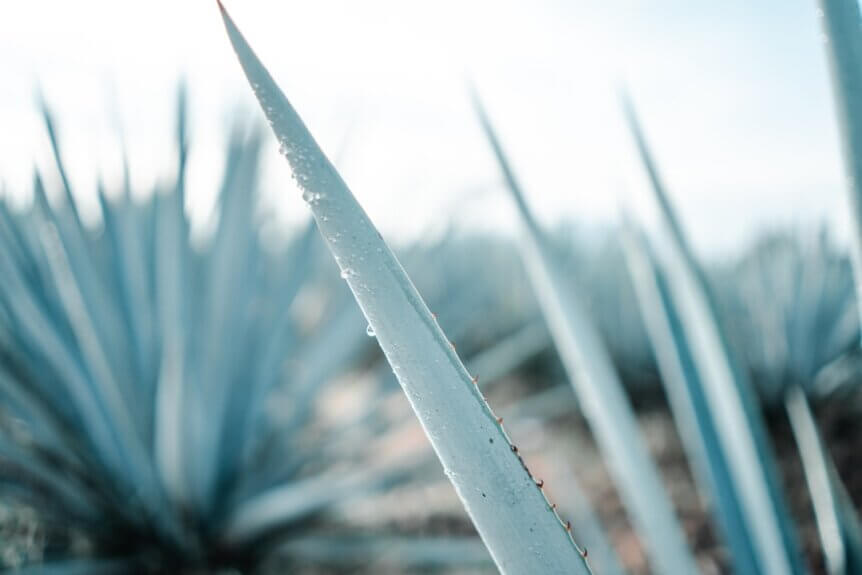
Tasting the Best Mezcal: Notes, Tips and Influences
Did you know that sales of mezcal exceeded $840 million around the globe in 2021, with sales expected to grow each year?
With popularity increasing yearly, many tequila and whiskey enthusiasts want to learn more about where to find the best mezcal on the shelves. From smoky mezcals to bold and fruity products, there are numerous types of mezcal for every individual taster.
If you’re interested in learning about different mezcal brands and how agave liquor has exploded in popularity, look no further. In this article, we will walk you through everything you need to know about mezcal tasting so you can head to the next party as an aficionado.
How Is Mezcal Made?
Mezcal production can be a complex and laborious process. The agave plant is the source from which Mezcal is produced and flavored.
It takes four years at minimum for an agave plant to mature to the point of harvesting. However, most agaves need 8-10 years to fully mature.
The agave plant produces a natural molecule called inulin. These molecules are unique because they do not convert directly to alcohol on their own. Roasting the agave plant beforehand prepares the plant for conversion to alcohol.
Roasting takes place in special stone ovens or pits and gives the traditional smoky notes that enthusiasts have come to expect from mezcal. The hearts of these plants are then pressed into a juice and placed in fermentation containers. After fermentation, the resulting solution is distilled.
Many people think that mezcal drinks are relatively new to the market. The reality is that distilling the agave plant has been a phenomenon in Mexico dating all the way back to the Spanish conquest. There is some evidence that this practice even predates that period. Agave has been used in cultural drinks for an extremely long period—over five centuries, to be specific.
Mezcal is a relatively broad term, similar to wine. Technically, anything that is fermented out of grapes is called wine. Similarly, anything distilled from the agave plant is known as mezcal. This means that there are many different types of varieties available. This means that there are many different types of varieties available.
How Is Mezcal Different from Other Spirits?
Many people ask this question after hearing about worms being placed in mezcal bottles. This was originally an idea that developed after World War II as a way to distinguish mezcals from other types of liquors on the shelf. Essentially, this was a marketing twist that helped to define the style of alcohol in North America.
However, including worms inside bottles is entirely safe for all drinkers. These worms are not hallucinogenic, as some have reported, and you can choose to consume the worm to add a savory flavor to the drink. However, you can also select certain brands to avoid the worms altogether.
How to Taste Mezcal like a Professional
Mezcal tasting is similar to tasting wine and other spirits. The flavor present in different mezcals can be determined by the type of agave plant used, the climate, the local ecosystem, and the overall distillation process.
A great way to taste mezcal drinks like a pro is to use orange slices that have been dusted with a special ingredient called tajin. Many mezcal tasting events will serve the drink in copitas or veladoras. This is how many bartenders will present the different types of mezcal to you.
Don’t try to down the mezcal as you would a tequila shot—all at once. Instead, it’s better to treat it like a fine wine and sip slowly.
First, you want to smell the liquid in the container and allow the taste palate to adjust to the special notes and aromas.
After you have allowed your palate to adjust to the flavors from the aromatics, go ahead and take a small taste. Just like wine, it is common practice to allow a small amount of air to enter your mouth at the same time you take a sip. This provides space for the flavors to expand and reach the taste receptors in your mouth.
Most tasters can easily sense the level of smokiness provided in notes in the mezcal.
Other Flavorings
Tasters also want to look for other types of notes and expressions common to different types of mezcal.
For example, when you first place your nose in the glass, look for fruity and floral notes. You may also encounter grassy, rubber, gasoline-like, and tobacco mezcal notes. While each tasting note may not sound appealing on their own, the combination of flavors created by master distillers can be sublime.
Because it takes years to produce these special bottles of alcohol, plenty of heart, soul, and planning goes into flavor development. See if you can define the liquor’s special notes and expressive elements when trying Mezcal.
Finding the Best Mezcal at Northeast Barrel Company
At the end of the day, there’s no right or wrong way to enjoy the best mezcal. Traditionally, most tasters like to try different types of mezcal in a process similar to a wine tasting. However, there are numerous ways to drink the unique liquor, including additional savory flavors like the famous worm in the bottle.
If you’re interested in learning more about mezcal and mezcal tasting, contact us today. We love to educate enthusiasts about refined and fermentative alcohols and how to enjoy them to the fullest.
